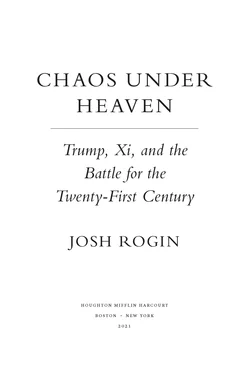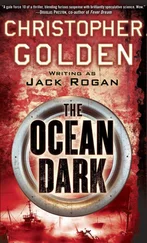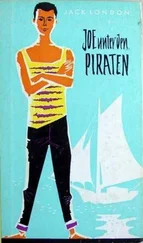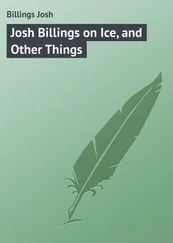Moreover, in June, two Chinese researchers living in the United States published a paper raising “major concerns” with the information that Shi had published about RaTG13 in her February 3 article in Nature, where she had first identified the virus that she claimed was the link between SARS-CoV-2 and bats. Shi’s paper on RaTG13, they noted, was missing key details about how RaTG13 was discovered and what its relationship was to BtCoV/4991 (the virus that killed the miners). Also, the WIV provided no source data and claimed they no longer possessed any actual samples of RaTG13 that they could hand over to other scientists to study. In other words, aspects of Shi’s first article on the new coronavirus were not standing up to scientific scrutiny. Other scientists concurred. “There are clear problems with how RaTG13 was described in Shi’s 2020 paper. There were material omissions and material misstatements,” Ebright told me.
The June paper’s authors hypothesized that the WIV may have fabricated the information to bolster the natural-spillover theory. Shi’s paper “was rushed to make a premature connection between bat coronavirus and SARS-CoV-2, drawing a potential bat origin scenario to support SARS-CoV-2 zoonotic transmission from bat to human,” they wrote. “However, this connection was based on a potential bat coronavirus strain RaTG13, that may not truly exist, considering its key information [is] missing . . .”
This pattern of deception and obfuscation, combined with the new revelations about how Chinese labs were handling dangerous coronaviruses in ways their Western counterparts didn’t know about, led some US officials to become increasingly convinced Chinese authorities were manipulating scientific information to fit their narrative. But there was so little transparency, it was impossible for the US government to prove, one way or the other. “If there was a smoking gun, the CCP buried it along with anyone who would dare speak up about it,” one US official told me. “We’ll probably never be able to prove it one way or the other, which was Beijing’s goal all along.”
Back in 2017, the US diplomats who had visited the lab in Wuhan had foreseen these very events, but nobody had listened and nothing had been done. “We were trying to warn that that lab was a serious danger,” one of the cable writers who had visited the lab told me. “I have to admit, I thought it would be maybe a SARS-like outbreak again. If I knew it would turn out to be the greatest pandemic in human history, I would have made a bigger stink about it.”
The Gloves Come Off
Throughout the summer of 2020, as the virus raged across the United States and Trump’s election prospects looked increasingly dim, the president gave the green light for his national security team to take whatever policies to push back on China’s malign behavtor they had sitting on the shelf and let them fly. The Phase One trade deal was in limbo, and anyway, $50 billion in soybean sales seemed less consequential when the economy was losing trillions, and when millions of Americans were out of work. Besides, there was no longer much of a relationship to save.
The Justice Department continued arresting and charging Chinese scientists who were found to have lied about their pasts or to have stolen research. The US Navy ramped up its missions reinforcing the US right to sail through waters claimed by China in the South China Sea and near Taiwan. In May, the State Department issued a rule limiting Chinese media visas to ninety days, whereas previously their duration had been unlimited. The Commerce Department sanctioned dozens of Chinese companies for proliferation and human rights abuses. Even the Treasury Department, for the first time, used its sanctions power against China in a real way, by applying the Global Magnitsky Act, a powerful law that could be invoked against officials in any country, to punish some Chinese human rights abusers.
The Trump administration slowly but surely began taking away all of the special economic and trade benefits afforded to Hong Kong, nominally as a response to Beijing’s crackdown there. First, the administration ended Hong Kong’s right to import sensitive US technologies. Then, it ended Hong Kong’s special economic status altogether, promising to treat Hong Kong like any other Chinese city for the purposes of investments and trade. This was a drastic move, to be sure—akin to saving a drowning friend by pushing their head underwater. But the Hong Kong democracy leaders urged the Trump administration to take these moves, because they believed Beijing must not be allowed to crush Hong Kong’s freedom while still profiting off the island’s special status.
Top Trump officials also gave a series of tough-on-China speeches. Pompeo, Attorney General William Barr, FBI director Christopher Wray, and National Security Adviser Robert O’Brien each made their final public case for an approach to China that viewed the CCP as a malign actor and called on Americans and citizens of other democracies to wake up to what these officials saw as the urgent need to confront the Chinese government’s threats across the board.
In early July, I traveled with O’Brien to Scottsdale, Arizona, an increasingly competitive 2020 battleground state, to watch him deliver his remarks on the CCP’s global ambitions and their influence operations inside the United States. “America, under President Trump’s leadership, has finally awoken to the threat the Chinese Communist Party’s actions pose to our way of life,” he told a room of about three dozen socially distanced audience members.
On the plane ride home, I asked him how the pandemic had altered the overall relationship with China. “We had hoped with the tariffs and the Phase One deal that China’s behavior would change, that it would be modified,” the national security adviser said. “It became very clear to the American people with the Wuhan virus outbreak that China is not going to change its behavior. The Chinese have weaponized COVID, they are trying to take advantage of this crisis to displace the United States as a global power.”
Two weeks later, O’Brien was diagnosed with COVID-19.
Total Chaos
Beijing saw in the coronavirus pandemic both a challenge and an opportunity. This was China’s chance to demonstrate that its model was more efficient and effective than the messy Western democracies. Because China was the first country to get hit by the virus, it was also the first country to deal with the consequences and come out on the other side. Its first-mover status gave Beijing an advantage. But the ways that the CCP decided to use that advantage ended up turning even more countries against it.
Rather than pursue open collaboration with the world’s scientists by making available all the experts and information they had accumulated, Chinese authorities banned all Chinese researchers from sharing coronavirus research without explicit government approval. When the US company Gilead sent Chinese researchers samples of their antiviral drug remdesivir for clinical trials using Chinese patients, the WIV tried to patent it. The US government also publicly accused the Chinese government of trying to steal vaccine and therapeutic research from US labs through cyber hacking and other means of intelligence collection.
While Chinese scientists tried to win the race for the cure, Chinese officials and experts began planning early on to capitalize on the crisis by expanding China’s economic reach and influence, especially in high-tech areas like 5G. “It is possible to turn the crisis into an opportunity—to increase the trust and the dependence of all countries around the world of ‘Made in China,’” Han Jian, of the Chinese Academy of Sciences and director of the Ministry of Civil Affairs’ China Industrial Economics Association, wrote on March 4.
Читать дальше











